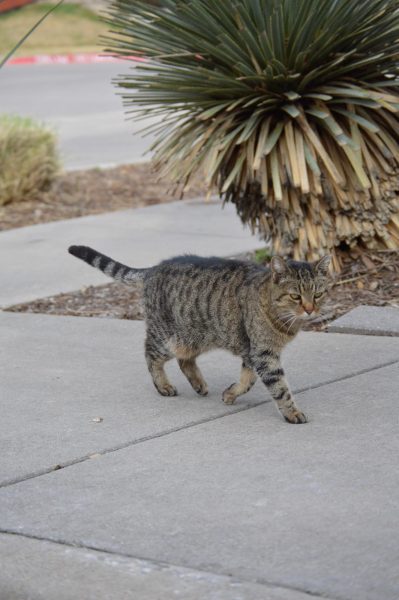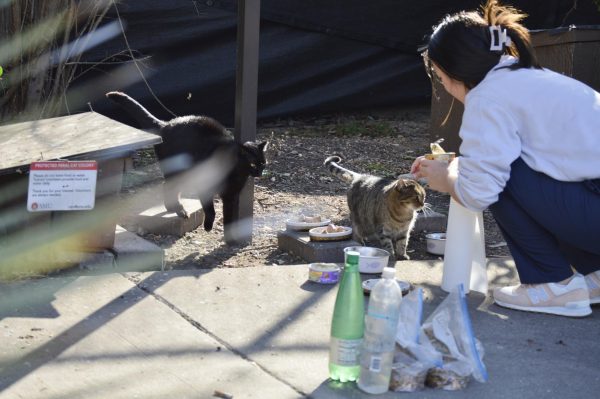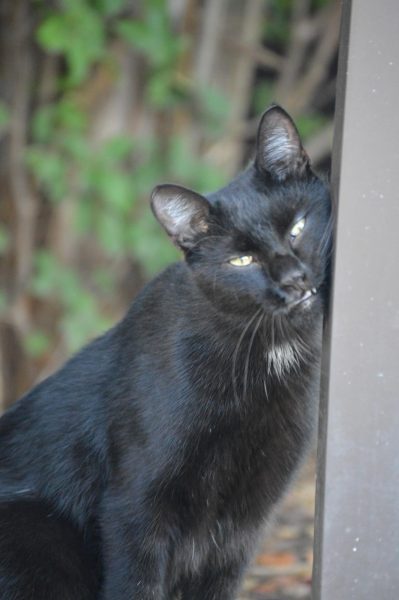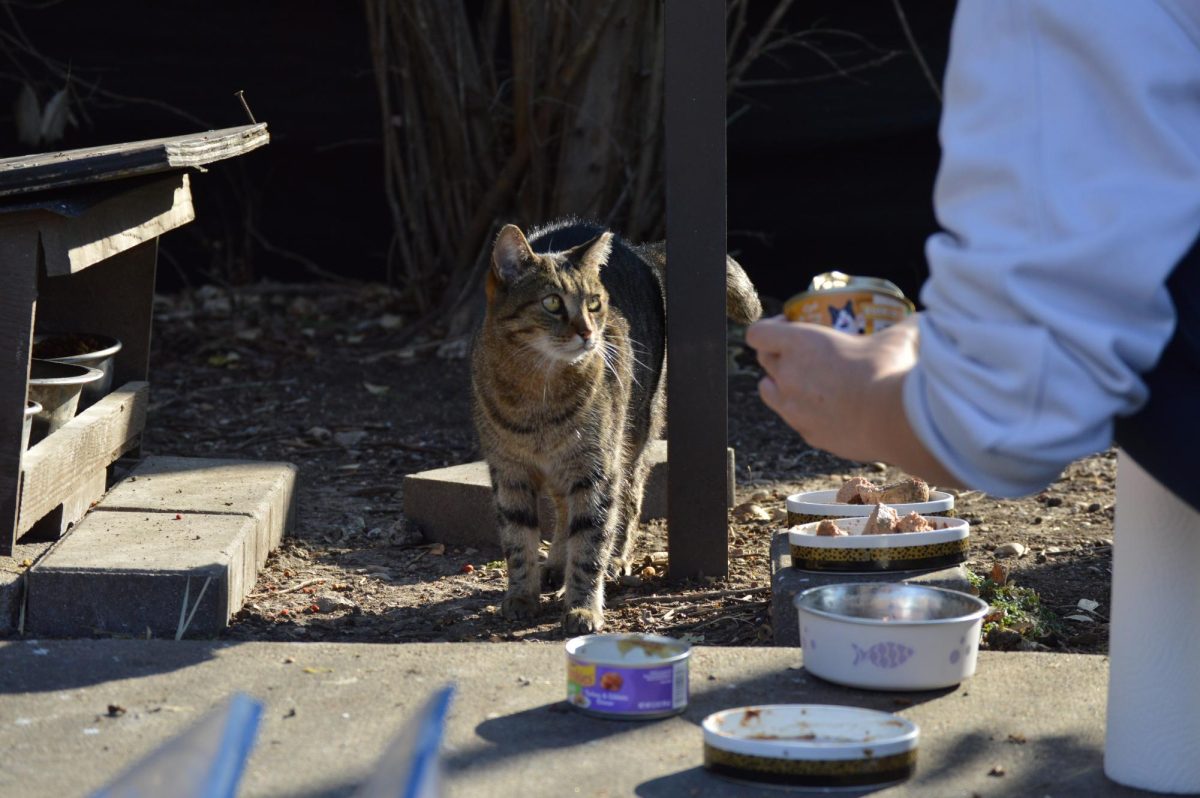This story was originally published in The DC’s Spring 2024 Issue.
A sparse and bare bush conceals Sassy, a brown tabby cat with glowing yellow eyes, as she scurries out of a rotting, wooden cat shelter. Nearby, a pair of black rain boots squish into the mud of a flower bed.
The owner of the rain boots, Kim Pierce, moves her gloved hand toward what’s left of the box and wiggles it. What’s left of Sassy’s shelter gives way as a mass of panicked cockroaches drops onto the mud.
“[The shelters are] more of a compassion issue,” Pierce said. “They’re going to take shelter somewhere and it might as well be in a reasonable shelter that we provide.”
Pierce walks to the bed of her small white truck and picks up a new cat shelter to put in the same place where the rotten one was. By replacing the shelters and filling new ones with fresh hay, the cats have a safe place to escape the weather.

Pierce, 74, is one of the leaders of The Feral Cat Group, a volunteer group that loves and cares for a community of about 25 hard-to-spot, yet beautiful feral cats that roam SMU. Although not everyone loves feral cats because they carry diseases like rabies and kill birds, volunteers say they are an essential part of the campus.
The group began in the 1980s when Clo Salisbury, a resident of University Park, was walking her dog around campus. During that walk, she came across a starving mother and her kitten, lying next to a dead kitten. Since then, volunteers have fed and cared for the campus cats.
Cats become feral when they live without an owner for an extended period and begin to have their own kittens that are not socialized. Eventually, they become impossible to adopt and are feral, Pierce says.
A pair of cats’ eyes peer through bushes in the early mornings and late evenings from under buildings in the Dedman Law School quad and in the flower beds by Fondren Library. Most of the campus cats are scarcely seen, says Lisa Silveira, a volunteer and second-year SMU law student.

Silviera takes pictures of the cats to keep track of them. The group also plans to install game cameras to monitor the activity in the law school area, because two cats that live around there haven’t been seen all semester.
“We’re seeing who is on campus and where they are,” Silveira said. “Also, anything that’s wrong with them, like we had a cat I took a picture of once and we realized that she had an eye infection.”
To maintain the population, the group uses what’s called a trap-neuter-return (TNR) technique. Pierce says that this technique has helped reduce the number of cats on campus.
“They’re [the volunteers] doing a service to the community,” says Dr. Patty Mullen, a veterinarian at Pavilion Animal Hospital in Dallas. “There is a huge benefit to decreasing the population of the cat community and I think this is probably the most humane way to do that.”
Some cats, like Sassy and a black cat named Tsunami, are prone to nuzzle on the volunteers feeding them. Others, like Damien, who died in February, require a 15-foot distance from humans.

“There’s probably no more than six to eight [campus cats] that are truly ‘Don’t touch me,’” Pierce says. “The others, it’s a range. Just because they’re friendly on campus, doesn’t mean they necessarily make good pets.”
Not everyone in the University Park community agrees with the Feral Cat Group’s TNR technique and how they care for them, says Rose Chavez, a volunteer leader and SMU staff.
“We just try to maintain the cats’ lives here,” Chavez says. “The cats can also be a deterrent for rodents … so they can be a benefit as well as cute little things on campus.”
Volunteers have their favorites. Chavez likes Ringo, an orange tabby that lives outside of the Dedman Recreation Center.
“There is good and bad with feral cats because they have such short lives,” Chavez says. “You never know if they are just missing or not … so I’m always happy when I see Ringo.”
This program can decrease diseases and fighting that are often found in feral cat communities, like feline immunodeficiency virus, Dr. Mullen says.
On Dyer Street, a low rumble escapes from Sassy as she spots Pierce approaching a feeding bowl with food and water.
Pierce responds with a slop of wet food and a tinkling of dry food, followed by a gush of water from a worn plastic water bottle.
Sassy and Tsunami rush to the feeding bowl.
“I’ll be here as long as there’s a cat that needs taking care of,” Pierce says.
To find out more about The Feral Cat Group at SMU, visit their website or email them at cats@smu.edu.










